Papers by A/prof Clare Delany

A common goal of ethics education is to equip students who later become health practitioners to n... more A common goal of ethics education is to equip students who later become health practitioners to not only know about the ethical principles guiding their practice, but to also autonomously recognize when and how these principles might apply and assist these future practitioners in providing care for patients and families. This article aims to contribute to discussions about ethics education pedagogy and teaching, by presenting and evaluating the use of the visual arts as an educational approach designed to facilitate students' moral imagination and independent critical thinking about ethics in clinical practice. We describe a sequence of ethics education strategies over a 3 year Doctor of Physiotherapy program, focusing on the final year professional ethics assessment task, which involved the use of visual arts to stimulate the exploration of ethics in healthcare. The data (in the form of student essays about their chosen artwork) were analyzed using both thematic and content ana...

Optometry and Vision Science, 2020
SIGNIFICANCE No research in optometric education that uses Moore's concept of creativity and ... more SIGNIFICANCE No research in optometric education that uses Moore's concept of creativity and object-based learning to cultivate “soft skills” exists. The design and outcomes of this study will contribute to the body of optometric education, and future research will assess the applicability of these findings to other allied health disciplines. PURPOSE Optometrists, like all health care professionals, need to be proficient in soft skills such as effective communication and interpersonal skills. Rather than assuming these soft skills can be developed “on the job,” we implemented a teaching intervention for students to develop their communication, interpersonal, and teamwork skills. METHODS Students from optometry, arts management, and animation attended an autobiographical museum in interdisciplinary groups and examined an artifact relating to aspects of professionalism mentioned previously. We evaluated whether and how students experienced this activity as enhancing their creativity and other soft skills via survey results and thematic analysis of their reflective essays. RESULTS Our findings showed that this group work has augmented their professional development, with approximately 90% of the students reporting that it had helped in critical self-reflection and future improvement of communication and interpersonal skills. Eighty percent of the students stated that this group work was beneficial and enjoyable and recommended object-based and interdisciplinary learning to be embedded in future group work. Themes generated from the essays were the following: (a) perceptions of object-based learning in a museum and (b) insights into group work experiences. CONCLUSIONS This is the first pilot study that investigates group work across optometry and nonclinical disciplines in a post-graduate curriculum using museum objects. Our findings, based on students' perceptions, imply that students emerged from the program with the intent to transfer their learning to their future practice. We propose that this purposefully designed-based and creative group work may support the development of professional attributes essential for optometric students.

Advances in Health Sciences Education, 2015
Clinical education is foundational to health professional training. However, it is also a time of... more Clinical education is foundational to health professional training. However, it is also a time of increased stress for students. A student's perception of stressors and their capacity to effectively manage them is a legitimate concern for educators, because anxiety and decreased coping strategies can interfere with effective learning, clinical performance and capacity to care for patients. Resilience is emerging as a valuable construct to underpin positive coping strategies for learning and professional practice. We report the development and evaluation of a psycho-education resilience program designed to build practical skills-based resilience capacities in health science (physiotherapy) students. Six final year undergraduate physiotherapy students attended four action research sessions led by a clinical health psychologist. Resilience strategies drawn from cognitive behavioural therapy, and positive and performance psychology were introduced. Students identified personal learning stressors and their beliefs and responses. They chose specific resiliencebased strategies to address them, and then reported their impact on learning performance and experiences. Thematic analysis of the audio-recorded and transcribed action research sessions, and students' de identified notes was conducted. Students' initial descriptions of stressors as 'problems' outside their control resulting in poor thinking and communication, low confidence and frustration, changed to a focus on how they managed and recognized learning challenges as normal or at least expected elements of the clinical learning environment. The research suggests that replacing stressful challenges with positive coping strategies offers a potentially powerful tool to build self-efficacy and cognitive control as well as greater self-awareness as a learner and future health practitioner.

BMJ quality & safety, Jan 11, 2017
As medical students transition to become trainee doctors, they must confront the potential for ma... more As medical students transition to become trainee doctors, they must confront the potential for making medical errors. In the high stakes environment of medicine, errors can be catastrophic for the patients and for doctors themselves. Doctors have been found to experience guilt, shame, fear, humiliation, loss of confidence, deep concerns about their professional skills and social isolation, effectively becoming the second victim of an error.1 ,2 A number of programmes and practices have been suggested to provide psychological first aid to second victims after an error has occurred.3 Little attention, however, has focused on how medical training can prepare doctors for the inevitability of error, and thus help protect them from potentially severe emotional consequences in the future. The WHO has developed the Patient Safety Curriculum Guide for Medical Schools , which includes training on understanding and learning from mistakes.4 In addition, the case has been made for error management training in which students are encouraged to experience error in safe settings, such as simulation exercises.5 ,6 While these approaches are promising, a more broad-spectrum psychological intervention aimed at changing how students perceive mistakes and cope with setbacks could be advantageous. Research from social psychology suggests a promising intervention that could help assist students in being resilient when encountering difficulties and setbacks. Mindset theory holds that our implicit assumptions about the origins of abilities such as intelligence and talent have a profound impact on how we view mistakes or failure.7 Those with a fixed mindset believe that ability is endowed and static, and thus a failure indicates a lack of ability. Those with a growth mindset view ability as acquired through effort, practice and learning from setbacks, and thus a failure represents an opportunity for development and improvement. A great deal of research …
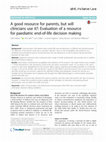
BMC Palliative Care, 2017
Background: Communication with parents about end-of-life care and decisions is a difficult and se... more Background: Communication with parents about end-of-life care and decisions is a difficult and sensitive process. The objective of the present study was to ascertain clinicians' views on the acceptability and usefulness of a handbook and web-based resource (Caring Decisions) that was designed as an aid for parents facing end-of-life decisions for their child. Methods: Qualitative interviews were conducted with a range of health professionals who provide care to children facing life-limiting conditions. Results: Data analysis confirmed the acceptability and usefulness of the resource. Two major themes were revealed: 1. Family empowerment, with sub-themes Giving words and clarity, Conversation starter, 'I'm not alone in this', and A resource to take away, highlighted how the resource filled a gap by supporting and enabling families in a multitude of ways; 2. Not just for families, with sub-themes A guide for staff, When to give the resource?, How to give the resource and Who should give the resource?, explored the significant finding that participants viewed the resource as a valuable tool for themselves, but its presence also brought into relief potential gaps in communication processes around end-of-life care. The interview data indicated the positive reception and clear value and need for this type of resource. However, it is likely that successful resource uptake will be contingent on discussion and planning around dissemination and use within the health care team.
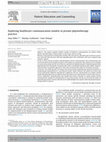
Patient Education and Counseling, 2015
This project explored whether models of healthcare communication are evident within patient-physi... more This project explored whether models of healthcare communication are evident within patient-physiotherapist communication in the private practice setting. Methods: Using qualitative ethnographic methods, fifty-two patient-physiotherapist treatment sessions were observed and interviews with nine physiotherapists were undertaken. Data were analyzed using thematic analysis. Results: In these clinical encounters physiotherapists led the communication. The communication was structured and focussed on physical aspects of the patient's presentation. These features were mediated via casual conversation and the use of touch to respond to the individual patient. Physiotherapists did not explicitly link their therapeutic communication style to established communication models. However, they described a purposeful approach to how they communicated within the treatment encounter. Conclusion: The communication occurring in the private practice physiotherapy treatment encounter is predominantly representative of a 'practitioner-centred' model. However, the subtle use of touch and casual conversation implicitly communicate competence and care, representative of a patient-centred model. Physiotherapists do not explicitly draw from theories of communication to inform their practice. Practice implications: Physiotherapists may benefit from further education to achieve patient-centred communication. Equally, the incorporation of casual conversation and the use of touch into theory of physiotherapy patient-centred communication would highlight these specific skills that physiotherapists already utilize in practice. 2015 Elsevier Ireland Ltd. All rights reserved.
Genetics in Medicine, 2014
Conclusion: This study sheds light on current practices in carrier testing for children, validati... more Conclusion: This study sheds light on current practices in carrier testing for children, validating this as an area that still requires attention.
The Clinical Teacher, 2013
Background: Medical migration is now more frequent, and raises complex issues concerning the stan... more Background: Medical migration is now more frequent, and raises complex issues concerning the standards of practice and transitions required for doctors. The challenges faced by international medical graduates have been acknowledged through the proliferation of orientation programmes designed within hospitals. This paper discusses and evaluates a pilot orientation programme for doctors in Victoria, Australia, called Transition in Practice. Methods: Drawing on theories of active reflection and situated learning, the programme entailed fortnightly meetings for new international medical graduates Medical migration is now more frequent, and raises complex issues Addressing challenges
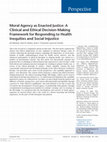
Physical Therapy, 2011
This is the second of 2 companion articles in this issue. The first article explored the clinical... more This is the second of 2 companion articles in this issue. The first article explored the clinical and ethical implications of new emphases in physical therapy codes of conduct reflecting the growing evidence regarding the importance of social determinants of health, epidemiological trends for health service delivery, and the enhanced participation of physical therapists in shaping health care reform in a number of international contexts. The first article was theoretically oriented and proposed that a rethinking of ethical frameworks expressed in codes of ethics could both inform and underpin practical strategies for working in primary health care. A review of the ethical principle of "justice," which, arguably, remains the least consensually understood and developed principle in the ethics literature of physical therapy, was provided, and a more recent perspective-the capability approach to justice-was discussed. The current article proposes a clinical and ethical decisionmaking framework, the ethical reasoning bridge (ER bridge), which can be used to assist physical therapy practitioners to: (1) understand and implement the capability approach to justice at a clinical level; (2) reflect on and evaluate both the fairness and influence of beliefs, perspectives, and context affecting health and disability through a process of "wide reflective equilibrium" and assist patients to do this as well; and (3) nurture the development of moral agency, in partnership with patients, through a transformative learning process manifest in a mutual "crossing" and "re-crossing" of the ER bridge. It is proposed that the development and exercise of moral agency represent an enacted justice that is the result of a shared reasoning and learning experience on the part of both therapists and patients.
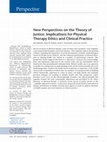
Physical Therapy, 2011
Recent revisions of physical therapy codes of ethics have included a new emphasis concerning heal... more Recent revisions of physical therapy codes of ethics have included a new emphasis concerning health inequities and social injustice. This emphasis reflects the growing evidence regarding the importance of social determinants of health, epidemiological trends for health service delivery, and the enhanced participation of physical therapists in shaping health care reform in a number of international contexts. This perspective article suggests that there is a "disconnect" between the societal obligations and aspirations expressed in the revised codes and the individualist ethical frameworks that predominantly underpin them. Primary health care is an approach to health care arising from an understanding of the nexus between health and social disadvantage that considers the health needs of patients as expressive of the health needs of the communities of which they are members. It is proposed that rethinking ethical frameworks expressed in codes of ethics can both inform and underpin practical strategies for working in primary health care. This perspective article provides a new focus on the ethical principle of justice: the ethical principle that arguably remains the least consensually understood and developed in the ethics literature of physical therapy. A relatively recent theory of justice known as the "capability approach to justice" is discussed, along with its potential to assist physical therapy practitioners to further develop moral agency in order to address situations of health inequity and social injustice in clinical practice.
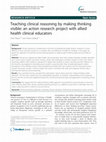
BMC Medical Education, 2014
Background: Clinical reasoning is fundamental to all forms of professional health practice, howev... more Background: Clinical reasoning is fundamental to all forms of professional health practice, however it is also difficult to teach and learn because it is complex, tacit, and effectively invisible for students. In this paper we present an approach for teaching clinical reasoning based on making expert thinking visible and accessible to students. Methods: Twenty-one experienced allied health clinical educators from three tertiary Australian hospitals attended up to seven action research discussion sessions, where they developed a tentative heuristic of their own clinical reasoning, trialled it with students, evaluated if it helped their students to reason clinically, and then refined it so the heuristic was targeted to developing each student's reasoning skills. Data included participants' written descriptions of the thinking routines they developed and trialed with their students and the transcribed action research discussion sessions. Content analysis was used to summarise this data and categorise themes about teaching and learning clinical reasoning. Results: Two overriding themes emerged from participants' reports about using the 'making thinking visible approach'. The first was a specific focus by participating educators on students' understanding of the reasoning process and the second was heightened awareness of personal teaching styles and approaches to teaching clinical reasoning. Conclusions: We suggest that the making thinking visible approach has potential to assist educators to become more reflective about their clinical reasoning teaching and acts as a scaffold to assist them to articulate their own expert reasoning and for students to access and use.

A common goal of ethics education is to equip students who later become health practitioners to n... more A common goal of ethics education is to equip students who later become health practitioners to not only know about the ethical principles guiding their practice, but also to autonomously recognise when and how they might apply and assist them in the care they provide for patients and families. This paper aims to contribute to discussions about ethics education pedagogy and teaching, by presenting and evaluating the use of the visual arts as an education approach designed to facilitate students’ moral imagination and independent critical thinking about ethics in clinical practice. We describe a sequence of ethics education strategies over a 3 year Doctor of Physiotherapy program, focusing on the final year professional ethics assessment task which involved the use of visual arts to stimulate exploration of ethics in healthcare. The data (in the form of student essays about their chosen artwork) was analysed using both thematic and content analysis. Two key themes centred on emotiona...

Optometry and Vision Science: November 2020 - Volume 97 - Issue 11 - p 962-969, 2020
SIGNIFICANCE No research in optometric education that uses Moore's concept of creativity and ... more SIGNIFICANCE No research in optometric education that uses Moore's concept of creativity and object-based learning to cultivate “soft skills” exists. The design and outcomes of this study will contribute to the body of optometric education, and future research will assess the applicability of these findings to other allied health disciplines. PURPOSE Optometrists, like all health care professionals, need to be proficient in soft skills such as effective communication and interpersonal skills. Rather than assuming these soft skills can be developed “on the job,” we implemented a teaching intervention for students to develop their communication, interpersonal, and teamwork skills. METHODS Students from optometry, arts management, and animation attended an autobiographical museum in interdisciplinary groups and examined an artifact relating to aspects of professionalism mentioned previously. We evaluated whether and how students experienced this activity as enhancing their creativi...
Higher Education Research & Development, 2016

This license allows third parties to freely copy and redistribute the material in any medium or f... more This license allows third parties to freely copy and redistribute the material in any medium or format as well as remix, transform or build upon the material for any purpose, including commercial purposes, provided the work is properly attributed to the author(s), including a link to the license, and any changes that may have been made are thoroughly indicated. The attribution can be provided in any reasonable manner, however, in no way that suggests the author(s) or the publisher endorses the third party or the third party's use of the work. The attribution must include: ISBN 978-82-02-55001-1 Third parties are prohibited from applying legal terms or technological measures that restrict others from doing anything permitted under the terms of the license. Note that the license may not provide all of the permissions necessary for an intended reuse; other rights, for example publicity, privacy, or moral rights, may limit third party use of the material.
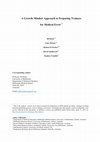
As medical students transition to become trainee doctors, they must confront the potential for ma... more As medical students transition to become trainee doctors, they must confront the potential for making medical errors. In the high stakes environment of medicine, errors can be catastrophic for the patients and for doctors themselves. Doctors have been found to experience guilt, shame, fear, humiliation, loss of confidence, deep concerns about their professional skills and social isolation, effectively becoming the second victim of an error.1 ,2
A number of programmes and practices have been suggested to provide psychological first aid to second victims after an error has occurred.3 Little attention, however, has focused on how medical training can prepare doctors for the inevitability of error, and thus help protect them from potentially severe emotional consequences in the future. The WHO has developed the Patient Safety Curriculum Guide for Medical Schools, which includes training on understanding and learning from mistakes.4 In addition, the case has been made for error management training in which students are encouraged to experience error in safe settings, such as simulation exercises.5 ,6 While these approaches are promising, a more broad-spectrum psychological intervention aimed at changing how students perceive mistakes and cope with setbacks could be advantageous. Research from social psychology suggests a promising intervention that could help assist students in being resilient when encountering difficulties and setbacks.
BMC Medical Education, 2014
Background: Clinical reasoning is fundamental to all forms of professional health practice, howev... more Background: Clinical reasoning is fundamental to all forms of professional health practice, however it is also difficult to teach and learn because it is complex, tacit, and effectively invisible for students. In this paper we present an approach for teaching clinical reasoning based on making expert thinking visible and accessible to students.







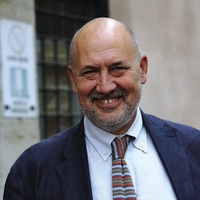



Uploads
Papers by A/prof Clare Delany
A number of programmes and practices have been suggested to provide psychological first aid to second victims after an error has occurred.3 Little attention, however, has focused on how medical training can prepare doctors for the inevitability of error, and thus help protect them from potentially severe emotional consequences in the future. The WHO has developed the Patient Safety Curriculum Guide for Medical Schools, which includes training on understanding and learning from mistakes.4 In addition, the case has been made for error management training in which students are encouraged to experience error in safe settings, such as simulation exercises.5 ,6 While these approaches are promising, a more broad-spectrum psychological intervention aimed at changing how students perceive mistakes and cope with setbacks could be advantageous. Research from social psychology suggests a promising intervention that could help assist students in being resilient when encountering difficulties and setbacks.
A number of programmes and practices have been suggested to provide psychological first aid to second victims after an error has occurred.3 Little attention, however, has focused on how medical training can prepare doctors for the inevitability of error, and thus help protect them from potentially severe emotional consequences in the future. The WHO has developed the Patient Safety Curriculum Guide for Medical Schools, which includes training on understanding and learning from mistakes.4 In addition, the case has been made for error management training in which students are encouraged to experience error in safe settings, such as simulation exercises.5 ,6 While these approaches are promising, a more broad-spectrum psychological intervention aimed at changing how students perceive mistakes and cope with setbacks could be advantageous. Research from social psychology suggests a promising intervention that could help assist students in being resilient when encountering difficulties and setbacks.
This workshop will introduce an innovative pedagogical approach using the visual arts, to foster students’ moral imagination, empathy and independent critical thinking about ethics for their future professional practice. We will present two examples from health disciplines (medicine and physiotherapy) of how visual arts was used to facilitate imaginative, emotional and conceptual thinking about ethics and professional experience.
Participants will have the opportunity to discuss their own disciplinary ethical norms and goals of education and to apply the visual arts pedagogy and methods to design a learning activity for their specific professional disciplinary practice.